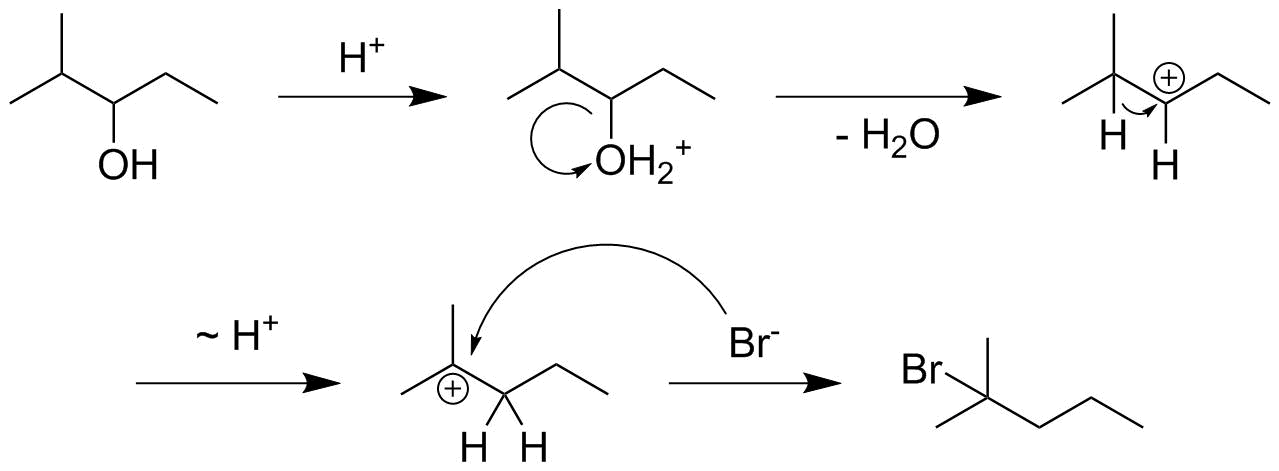You need to consider the possible and plausible reaction mechanisms for both substrates. They are both nucleophilic substitutions in first approximation, so we need to decide whether $\mathrm{S_N1}$ or $\mathrm{S_N2}$ mechanisms are more plausible.
Primary electrophilic carbons are very likely to undergo $\mathrm{S_N2}$ reactions while $\mathrm{S_N1}$ is strongly disfavoured since primary carbocations are less stable than secondary or tertiary ones.
Secondary electrophilic carbons can react according to both mechanisms, technically. However, both mechanisms are not ideal: the steric strain is rather large so $\mathrm{S_N2}$ reactions are slower and secondary carbocations are still rather unstable compared to tertiary ones, so $\mathrm{S_N1}$ reactions are slower.
In this case, we have the possibility to stabilise the less stable second intermediate in the scheme shown below by a Wagner-Meerwein rearrangement. We can let both hydrogen or methyl migrate, but the hydrogen migration gives us the most stable carbocation (a tertiary one) so it will prevail. Multiple other migration paths will likely lead to minor products.
The primary carbon will not, as stated above, form a primary carbocation since it is too unstable. Hence only the bimolecular substitution will occur. If no primary carbocation is generated, no Wagner-Meerwein rearrangement can occur. And the mechanism of an $\mathrm{S_N2}$ reaction does not allow bromide’s (or anything else’s) migration.
The secondary carbon could undergo bimolecular substitution, too. The reaction rate will probably be slower than that of fragmentation and rearrangement, though, since the latter are unimolecular processes. And other shifts (e.g. methyl followed by hydride) are possible but again slower since you need to shift twice. All in all, a higher proportion of side-products may be expected.
In no case will the bromide shift after substitution; any shift would need to occur before.


